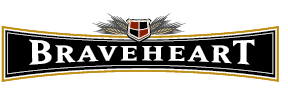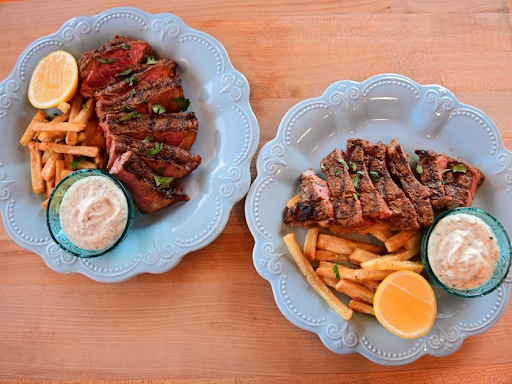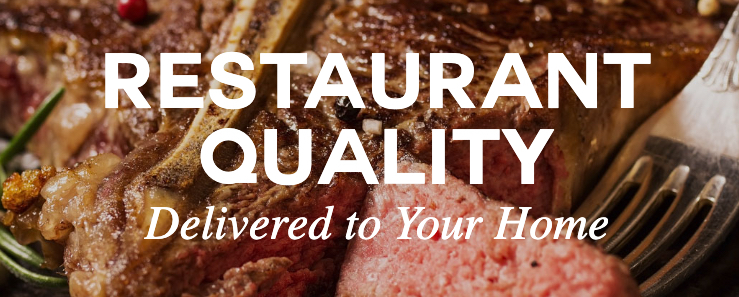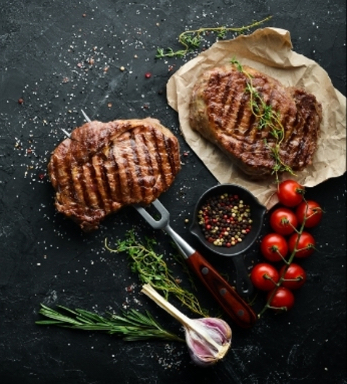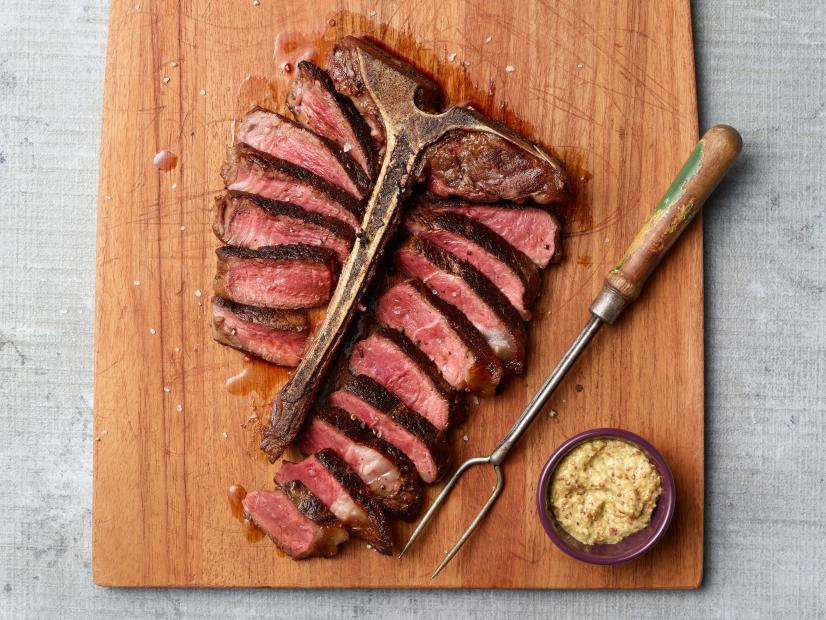With two very different names they share many similarities. The Porterhouse steak and T-bone steak both share a similar T-shape in the center of the meat and while they are cut from the same section of the cattle, they are very different steaks.
Porterhouse Steak
A porterhouse is the larger tenderloin muscle containing the thickest layer of the tenderloin which differentiates it from a T-bone steak. Since the cut is much thicker, it contains a significantly larger amount of the tenderloin filet in relation to the loin portion. The porterhouse combines two different types of beef cuts making for a more significant portion size, one side of the t-bone shape is the top loin or better known as a new york strip and the other side is a tenderloin filet. The porterhouse steak offers nutritional factors of protein as well as B vitamins, zinc, and iron oftentimes weighing over 2 pounds.
T-bone Steak
A T-bone steak is relatively smaller compared to the porterhouse steak, typically weighing in at 12 ounces. A T-bone steak also separates two cuts of meat combining a meaty flavor filled strip portion and the signature tender-filled cut of filet mignon. This steak offers around 23 grams of protein, plus almost one-third of daily vitamin B12 intake in addition to a good source of vitamin B6, riboflavin, and niacin, as well as beneficial trace minerals of iron, zinc, and selenium. It is often recommended to be consumed in moderation due to it being high in cholesterol and fat.
What’s the difference?
There are 3 major differences when looking at these two types of steaks.
Appearance:
Porterhouse steaks and T-bone steaks are often differentiated by size. While both steaks include a t-bone shaped bone, the porterhouse steak contains larger amounts of tenderloin making it thicker providing one side having a large strip steak and the other side more of a tenderloin. The T-bone steak is made up of smaller amounts of tenderloin and are often cut closer to the front.
Preparation:
When looking at preparing these steaks they are both prepared in different fashions. The T-bone steak is really made for grilling for the tenderloin to remain tender and flavorful and for the generous bits of fat to keep the steak moist. The T-shaped bone provides for a great handle to flip the steak to cook on both sides. Porterhouse steaks can also be grilled but for best results they require more time and preparation. Porterhouse steaks often work best with a hot smoking cast iron skillet on the stovetop or a broiler, beginning hot and fast it gives the surface of the steak a nice sear.
Size and source:
As previously mentioned, size is a large differentiating factor when it comes to looking at the differences between a porterhouse steak and t-bone steaks. The size of a porterhouse steak should be 1.25 inches thick because they generally have more filet compared to T-bone. A T-bone steak contains less filet, which has small amounts of tenderloin.
